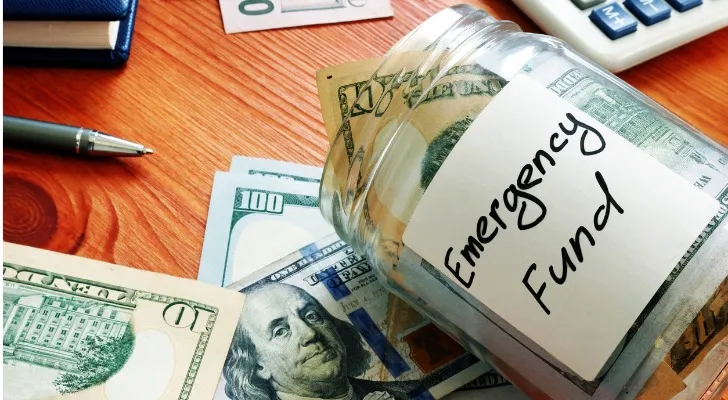
In today’s unpredictable world, financial stability is more essential than ever. One significant aspect of achieving stability is having an emergency fund, which is a safety net to fall back on when unexpected financial “what-if” moments arise. In this comprehensive guide, we’ll explore how to build an emergency fund, how much money you should keep in one and the types of accounts that should house your savings. After you’ve built an emergency fund, consider working with a financial advisor to set and achieve your long-term financial goals.
What Is an Emergency Fund?
At its core, an emergency fund is a savings account dedicated to covering unforeseen expenses that inevitably arise. It serves as a financial buffer, protecting individuals from unanticipated financial turbulence and ensuring they can cover vital costs during challenging times.
Life is full of surprises and unexpected expenses like medical bills, car repairs and job loss. Having an emergency fund can make all the difference when faced with these financial challenges, providing much-needed peace of mind and stability. Without an emergency fund, you could be forced into debt or bankruptcy, resulting in serious long-term financial consequences.
How Much Should You Save in Your Emergency Fund?

Determining the right amount to save in your emergency fund depends on several factors, including your current monthly expenses, potential emergencies and your personal financial goals. You’ll need to make sure you have enough to pay for an unexpected event, like if your air conditioning goes out or if you need to buy a new fridge. But you’ll also want to make sure you can pay your monthly expenses if something more drastic happens, such as losing your job.
Factors to Consider When Determining Your Emergency Fund Amount
It’s crucial to consider a number of things when you’re trying to decipher how much you need in your emergency fund. Keep these factors in mind:
- Your current living expenses
- Employment stability
- Family size
- Insurance coverage
- Other savings
- Potential to replace your income
A larger family or a less stable job typically means a more substantial emergency fund will be necessary. These factors are important because they directly impact your financial security during emergencies.
Calculating Your Emergency Fund Amount
As a general rule of thumb, experts suggest keeping from three to six months’ worth of living expenses in your emergency fund. To calculate your target, estimate monthly expenses such as housing, utilities, food and required loan payments. Multiply this figure by the desired number of months of coverage to determine your target emergency fund amount.
For example, if your monthly expenses total $2,000 and you want six months’ worth of coverage, your target emergency fund amount would be $12,000. If you own other assets that you’re responsible for, such as a small business or a real estate property, then it can become more complicated to factor in any potential expenses that you might incur.
How to Build Your Emergency Fund
Creating a robust emergency fund takes time, patience and a strategic approach. Here are four steps to help you succeed and make sure you can achieve the peace of mind.
Step 1: Make a Budget
First and foremost, create a comprehensive budget outlining your monthly income, expenses and savings goals. This budget will help you identify areas where you can reduce spending. You can then allocate those savings toward your emergency fund. Consider using budgeting tools like SmartAsset’s budget calculator or other resources to help manage your finances if you’re not sure how to go about creating that budget.
Step 2: Set Your Emergency Fund Goal
Establish a clear, attainable target amount for your emergency fund. Keep this goal in mind as you work toward it and don’t forget to celebrate milestones along the way. Remember to adjust your goals as needed throughout the process, particularly adapting to different financial situations.
Step 3: Find Opportunities to Save
Regularly review your budget, seeking out new ways to save money and grow your emergency fund. Consider cutting back on non-essential expenses like dining out and explore side income opportunities like freelancing, pet-sitting or selling items on platforms like eBay or Poshmark.
Step 4: Keep Saving After You Reach Your Goal
Your financial situation will evolve over time and so should your emergency fund’s target amount. Continue to save, adjusting your goal in response to changing life situations, rather than arbitrarily. This approach will ensure your emergency fund provides adequate support regardless of your current circumstances. For instance, if you move into a new apartment that costs an extra $200 per month, your emergency fund will need between $600 and $1,200 more in emergency savings.
Best Places to Keep Your Emergency Fund

It’s important to select a secure and easily accessible location for your emergency fund, where it can earn interest without tempting you to spend from it. Ensure that your emergency fund is easily accessible but still separate from your regular spending.
Look for accounts that offer low fees, high-interest rates, convenient access options and robust account security. Some types of accounts to consider include:
- High-yield savings accounts: These offer higher interest rates than traditional savings accounts.
- Money market accounts: These typically provide higher interest rates and allow limited check-writing or debit transactions.
- Short-term CDs: Certificates of deposit (CDs) are known for their competitive interest rates and secure storage options.
Bottom Line
Building and maintaining an emergency fund is an ongoing process, essential for sustained financial security. By actively managing your finances, adjusting your goals and practicing foresight, you’ll acquire the keys to achieving and maintaining financial stability in times of uncertainty. An emergency fund should be large enough to cover between three and six months’ worth of expenses, and be kept in an accessible account that’s separate from your other accounts.
Savings Tips
- Need help setting and achieving savings goals? A financial advisor can help and finding one doesn’t have to be hard. SmartAsset’s free tool matches you with up to three vetted financial advisors who serve your area, and you can have a free introductory call with your advisor matches to decide which one you feel is right for you. If you’re ready to find an advisor who can help you achieve your financial goals, get started now.
- A high-yield savings account is a good place to park your savings. With so many options on the market, it can be hard to pick the right account, but we’ve got your back. SmartAsset tracks the interest rates of high-yield savings accounts and even has a list of the best high-yield savings accounts available.
Photo credit: ©iStock.com/AsiaVision, ©iStock.com/designer491, ©iStock.com/Delmaine Donson